Grey Heron, Blauwe reiger, Graureiher, Garça-real, Garza Real
Spotted on Monte Horizonte in the Alentejo region of Portugal Grey Heron sound
The Grey Heron (Ardea cinerea), is a wading bird of the heron family Ardeidae, native throughout temperate Europe and Asia and also parts of Africa. It is resident in the milder south and west, but many birds retreat in winter from the ice in colder regions. It has become common in summer even inside the Arctic circle along the Norwegian coast.
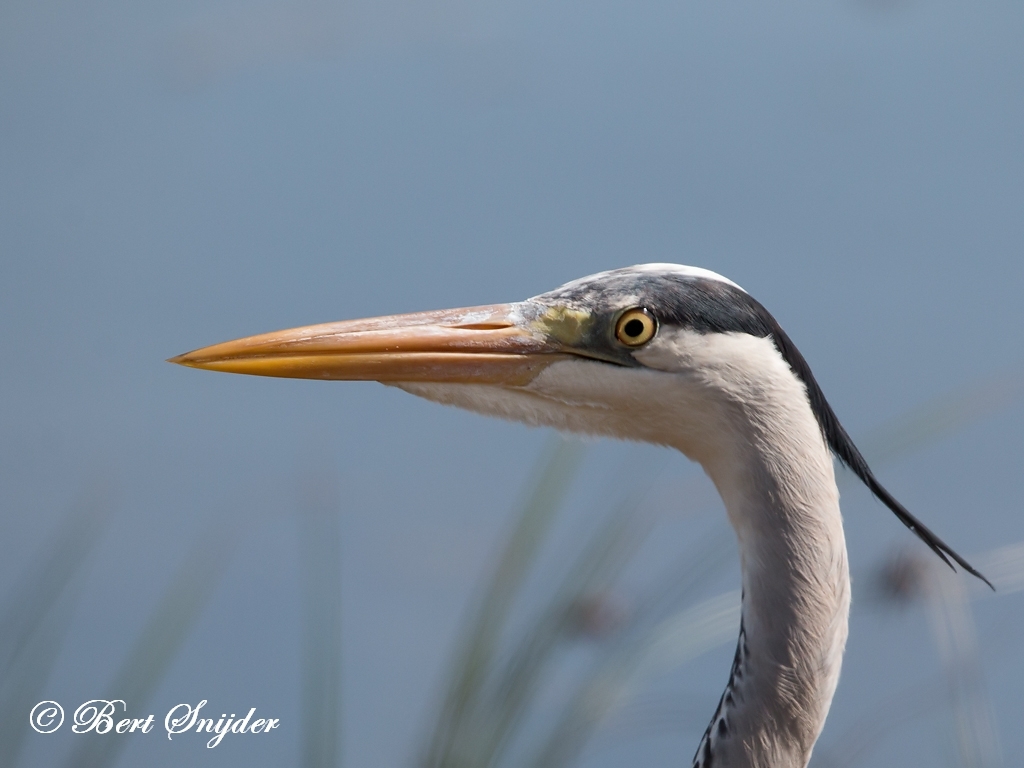
It is a large bird, standing 90-100 cm tall, with a 175-195 cm wingspan and a weight of 1-2 kg. Its plumage is largely grey above, and off-white below. Adults have a white head with a broad black supercilium and slender crest, while immatures have a dull grey head. It has a powerful, pinkish-yellow bill, which is brighter in breeding adults. It has a slow flight, with its long neck retracted (S-shaped). This is characteristic of herons and bitterns, and distinguishes them from storks, cranes and spoonbills, which extend their necks. The call is a loud croaking “fraaank”. The Australian White-faced Heron is often incorrectly called Grey Heron.
It is closely related and similar to the American Great Blue Heron, which differs in slightly larger size, and chestnut-brown flanks and thighs.
It feeds in shallow water, catching fish, frogs, and insects with its long bill. Herons will also take small mammals, reptiles and occasionally walbler nestlings, plovers, young and adult snipes, takes ducklings and tern chicks and other small birds. It will often wait motionless for prey, or slowly stalk its victim.
In the Netherlands, the Grey Heron has become a very common species in recent decades by moving into urban environments in great numbers. There, the herons hunt as they usually would but also make use of food discarded by humans, will visit feeding times in zoos to birds such as penguins and pelicans and some individuals even make use of people feeding them at their homes.
This species breeds in colonies in trees close to lakes, the seashore or other wetlands, although it will also nest in reedbeds. It builds a bulky stick nest.
Below 4 photos in sequence of how a Grey Heron eats a big rat:
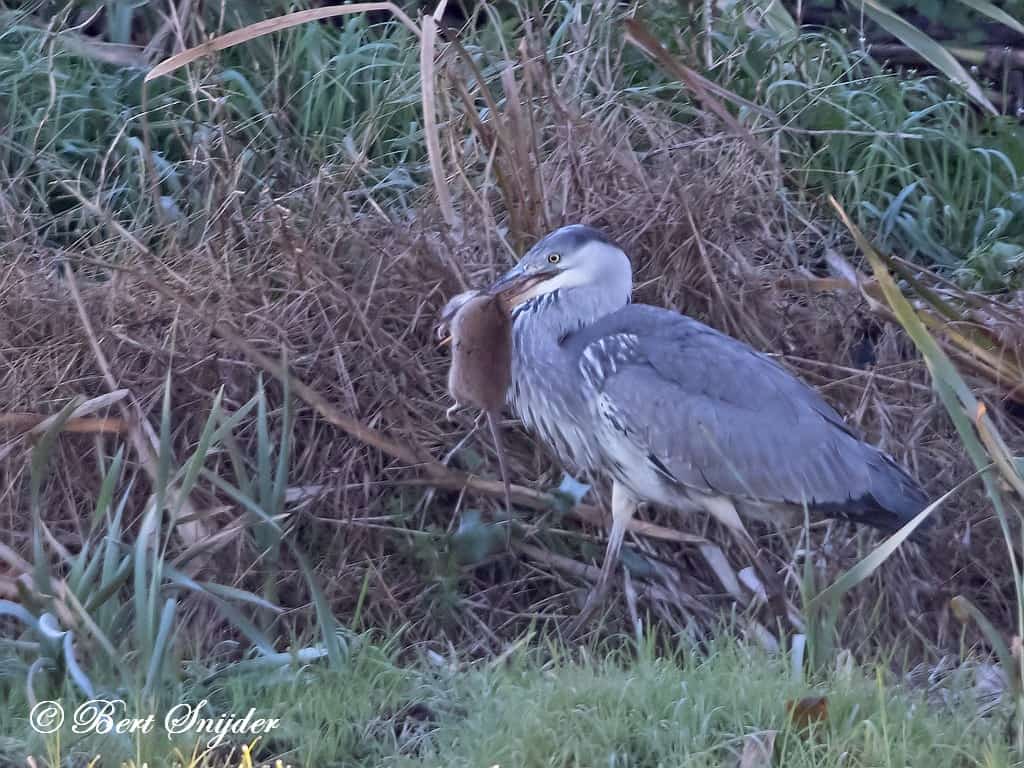
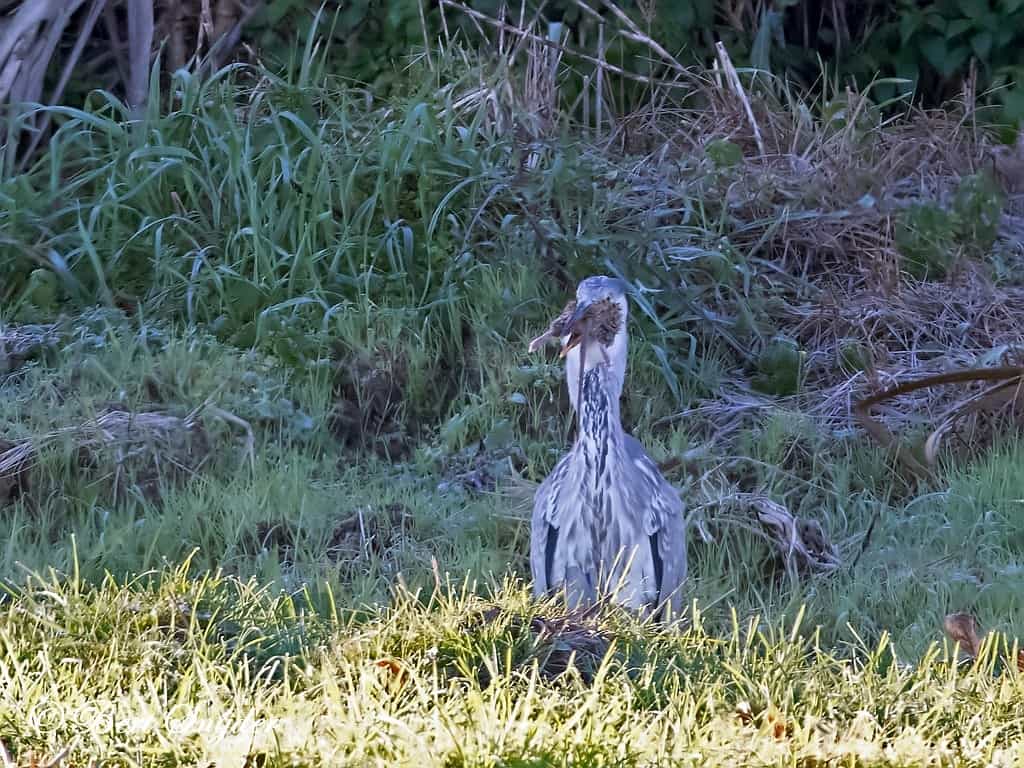

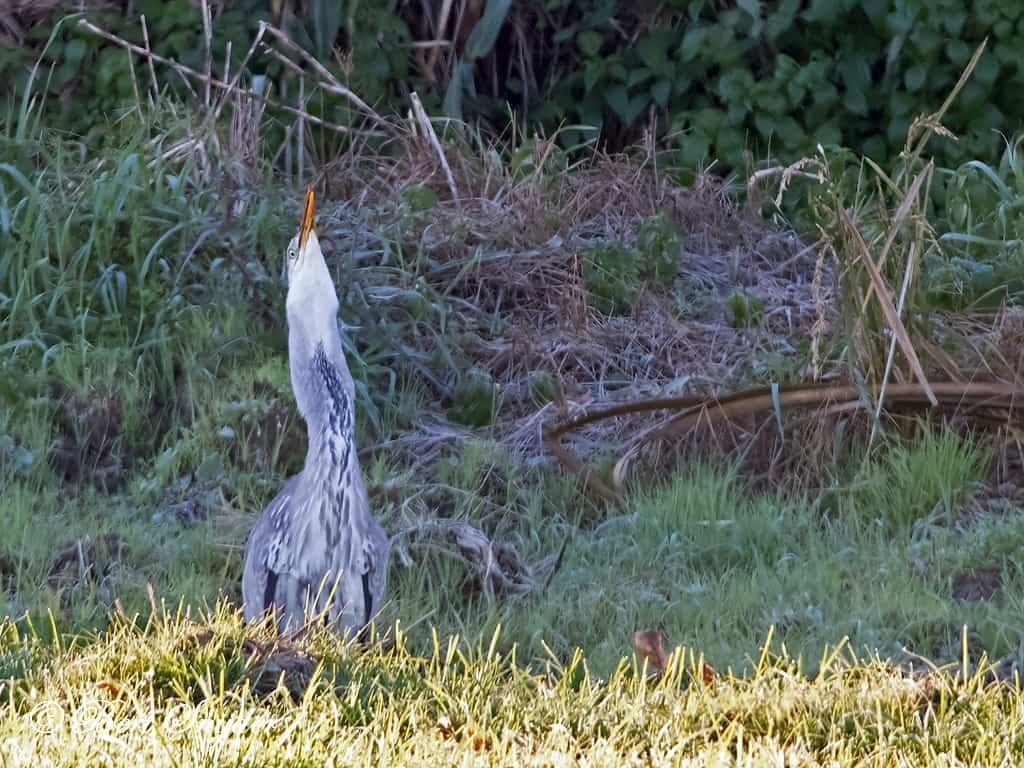
More photos:


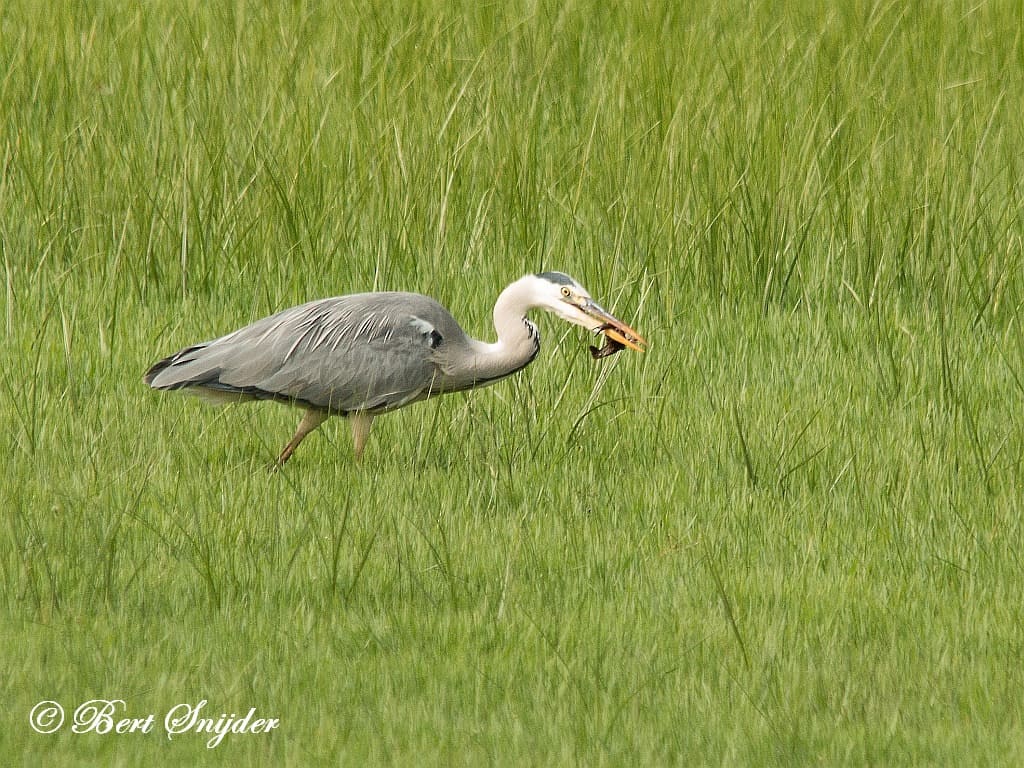
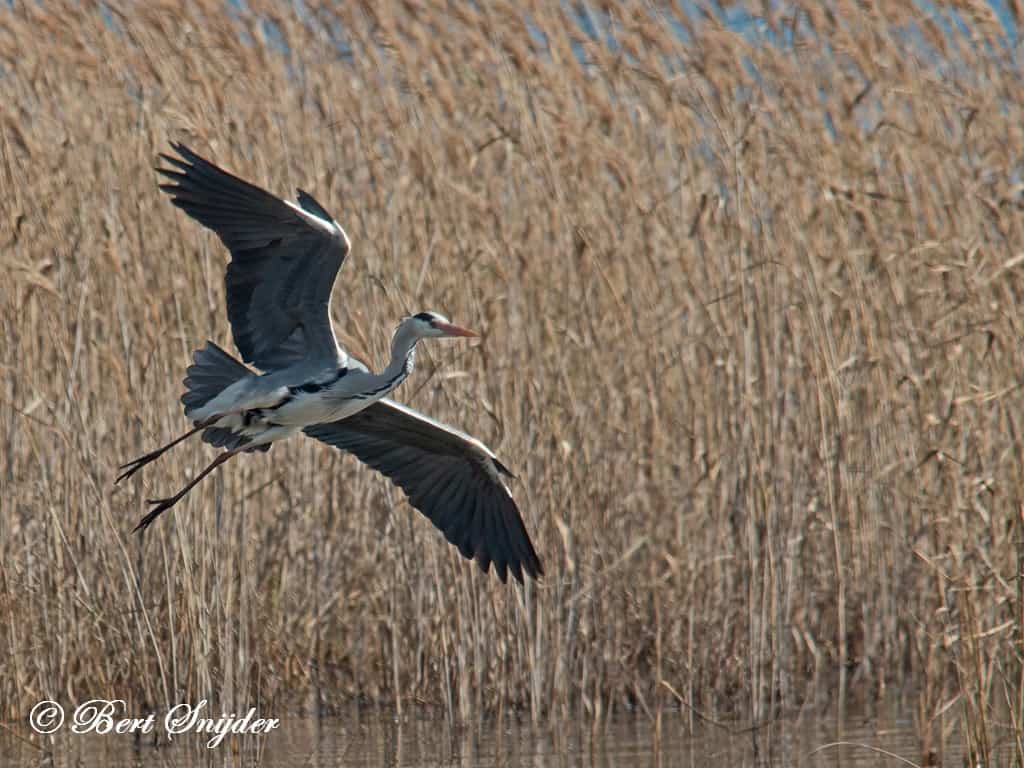


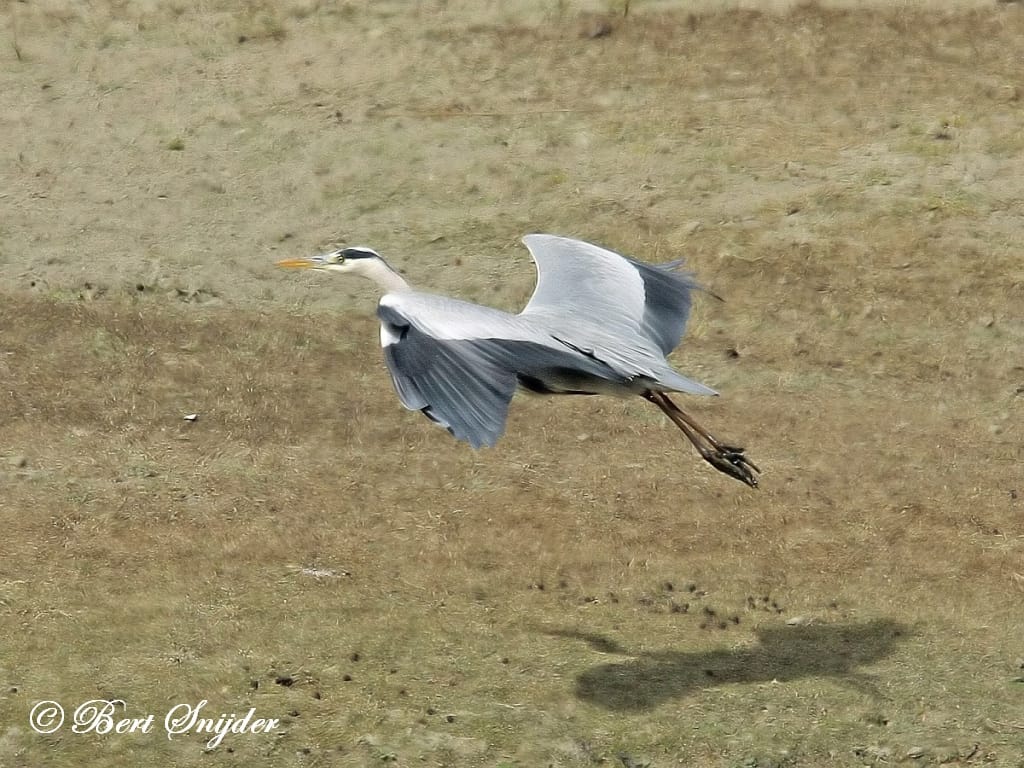
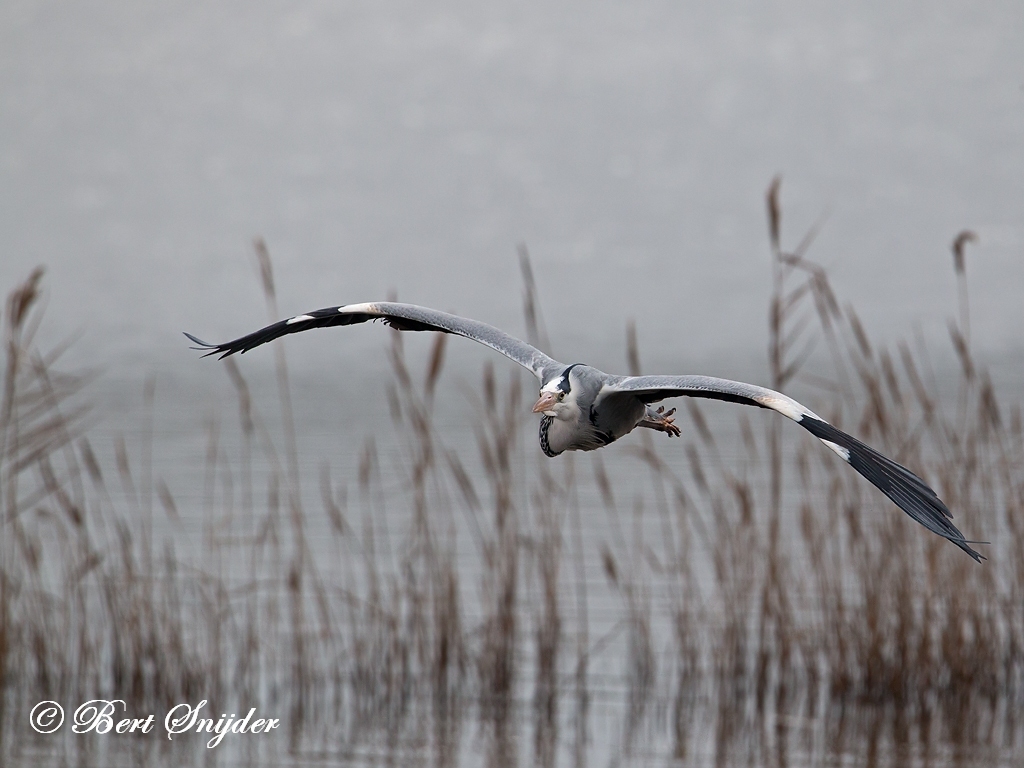
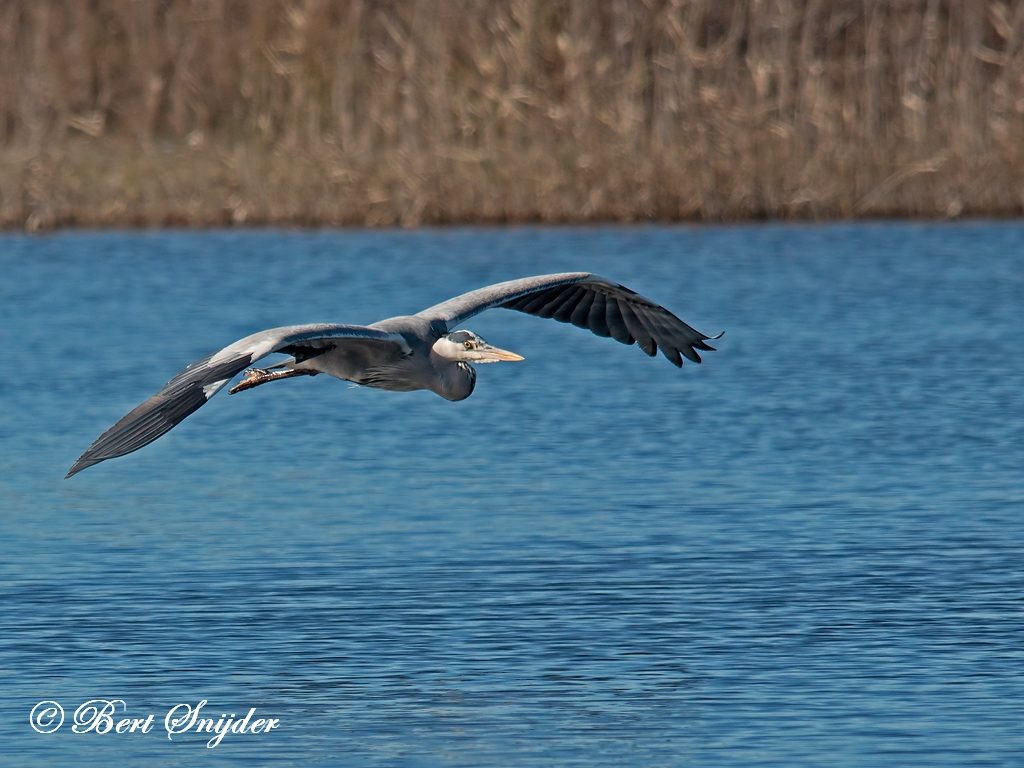
Other synonyms:
Afrikaans: Bloureier
Araucanian: Xürla
Mapundungun: Xürla
Tibetan: Kam ka
Breton: Ar gerc’heiz louet, Gerc’heiz, Kerc’heiz, Marc’harid-gouzoug-hir
Bosnian: Caplja
Catalan: Agró blau, Bernat pescaire, Garsa
Catalan (Balears): Agró blau
Valencian: Agró blau, Garsa
Czech: Volavka popelavá
Welsh: Crêyr glas, Crëyr glas, Crychydd, Garan
Danish: Fiskehejre
German: Fischreiher, Graureiher
Emiliano-romagnolo: Sghéirz
English: Common Heron, European Blue Heron, European Common Heron, European Heron, Gray Heron, Grey Heron, Heron, Mauritanian Heron
Esperanto: Griza ardeo
Spanish: Garza Gris, Garza Real
Estonian: Hallhaigur
Basque: Bernat pescaire, Lertxun, Lertxun hauskara
Finnish: Harmaahaikara
Faroese: Hakaspjað, Hegri, Pinnur í reyv
French: Héron cendré, Héron huppé, Héron pâle
Frisian: Ielreager
Irish: Corr éisc, Corr Réisc
Gaelic: Corra Riathach, Corra-Ghritheach
Galician: Bernat pescaire, Garza real
Guarani: Hoko, Kuarahy mimby
Manx: Coar ny hastan, Coayr, Coayr Glass, Coayr ny Hastan
Croatian: Siva Caplja
Hungarian: Szürke gém
Indonesian: Cangak Abu, Cangkak abu
Icelandic: Gráhegri
Italian: Airon, Airóne, Airone cenerino, Airòun, Aurana
Modenese: Airòun
Napulitano: Airóne, Aurana
Paduan: Airon
Japanese: aosagi, Ao-sagi
Kwangali: Samunkoma
Latin: Ardea cinerea, Ardea cinerea cinerea
Ligurian: Perdigiorni
Lithuanian: Govaras, Kumpakaklis, Pilkasis garnys, Pilkasis starkus
Malagasy: Langoromavo, Vano, Vanokasira
Malay: Pucung Seriap, Seriap
Maltese: Russett griz
Dutch: Blauwe Reiger
Flemish: Reiger
Norwegian: Fiskeheire, Gråhegre, Heire
Occitan: Bernat pescaire
Polish: czapla siwa
Portuguese: garça real, garça-cinza, Garça-real, Garca-real-europeia, garça-real-européia
Portuguese (Brazil): garça-cinza, Garca-real-europeia, Garça-real-européia
Quechua: Wajjchilla
Romansh: Irun grisch
Sardinian: Garza, Menga, Mengoni, Perdigiorronadas
Scots: Corra ghritheach, Corra riathach
Northern Sami: Háigir
Slovak: Volavka popolavá
Slovenian: siva caplja, sivacaplja
Albanian: Çapka e përhime, Çapka e përhimë
Sotho, Southern: Kokolofitoe
Swedish: Grå häger, Gråhäger, Häger
Swahili: Koikoi Kijivu, Kongoti, Korongo
Venetian: Sgarza
Xhosa: Isikhwalimanzi
Travel Birdwatching Holiday Alentejo, Vacation Portugal for birders to see birds on your trip